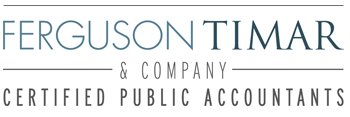
Tax efficiency is critically important for optimizing return on investments in real estate. The rules of depreciation are central to how a real estate buyer’s purchase costs are accounted for over time. By conducting a cost segregation analysis, a purchaser of a commercial building or real estate complex can begin to claim substantially more of its purchase price as an expense than might otherwise be the case.
Ferguson Timar serves many businesses that own real estate. We encourage investors in real estate—whether they are buying for short-term reasons or with the intent to hold for decades—to explore the benefits of cost segregation analysis as part of a broader tax strategy.
How does depreciation of real estate assets work?
When a business buys a durable asset—that is, something with an expected usable life of more than one year—it typically cannot claim the full amount of the purchase price as an expense in the year of acquisition. Instead, the value of the asset is broken up into chunks, with a portion of the purchase price taken as a deduction each year until a specified threshold, the asset’s salvage value, is reached on the books.
The IRS sets the depreciation schedules that apply to particular assets (see IRS Publication 946 for details). The more durable the asset, the longer the mandated schedule. A commercial building typically is subject to a 39-year depreciation schedule. Residential rental properties typically follow a 27.5-year schedule.
While the schedules applicable to buildings are quite long, those applicable to other types of asset are considerably shorter. An asset that is not structurally necessary for the building—an office fixture, a hot water heater, or even the doors and windows—can have a depreciation schedule of 15 years or less, and can also qualify for bonus depreciation in the early years of ownership.
A cost segregation analysis breaks down a building by asset type
In a cost segregation analysis, specialists in tax accounting and construction engineering work together to categorize each component of a building into their respective asset classes for depreciation purposes. The end result allows the building’s owner to begin claiming a much larger portion of the purchase price allocated to the non-building assets as depreciation expenses.
The scope of “non-building assets” can be surprising. We’ve already mentioned doors and windows: imagine how much value is in a modern building’s windows alone. Now consider elements like the tile work in a lobby, the light fixtures in every space, the floor treatments, and the specialized systems, like integrated networking features, that are built into the walls. By identifying each of these types of assets, a building’s owner can begin to claim higher deductions sooner.
How does a cost segregation analysis work?
The approach taken by the professionals who conduct cost segregation analyses will vary depending on several factors, including these:
- How long has the client owned the property? In general, the benefits of a cost segregation analysis are greatest if it is conducted soon after the building is acquired. Many of the benefits of applying a shorter depreciation schedule to qualifying assets are lost after just a few years.
- What kind of property is it? An apartment complex with uniform unit types will need a different approach than a business park with a wide variety of spaces.
- What records are available? The more detailed the records about a property—blueprints, materials invoices, and so forth—the easier the analysis becomes.
A properly executed cost segregation analysis is a hands-on process. The assets will be physically counted and catalogued to ensure that depreciation claims are accurate and backed up with rigorous documentation. Then assets will be parsed into their correct categories following IRS rules. Finally, the new claimable depreciation expenses will be calculated and incorporated into the taxpayer’s returns.
Get more from your real estate investments with Ferguson Timar
If your business has purchased a property within the last couple of years, or you’re thinking about buying in the near future, cost segregation analysis might be appropriate for you. The tax professionals at Ferguson Timar can help you evaluate whether this strategy is appropriate for your business.
Give Ferguson Timar a call today at (714) 204-0100 or send us an email to schedule an appointment with one of our tax professionals.
